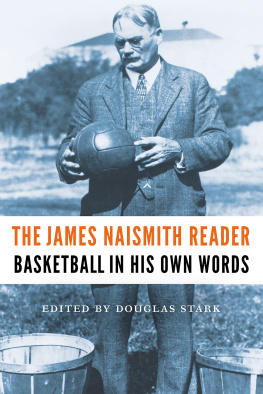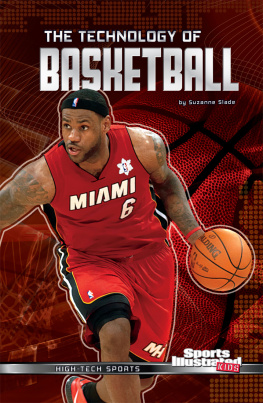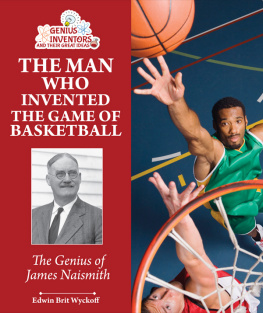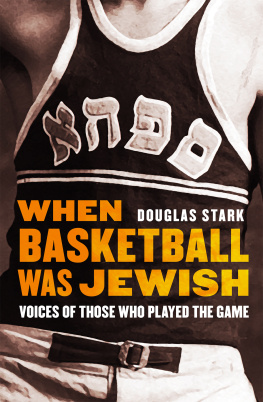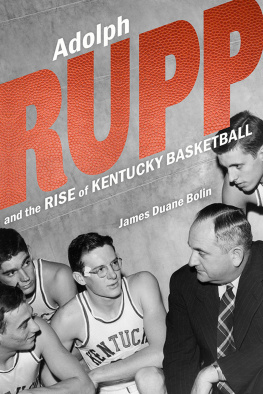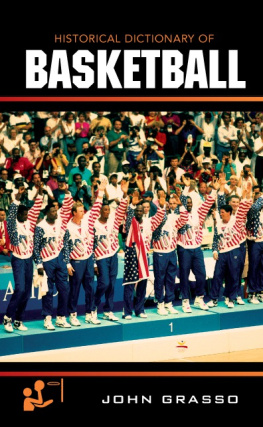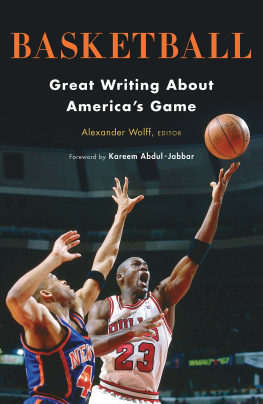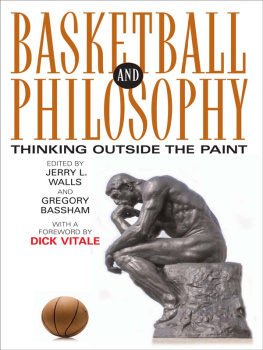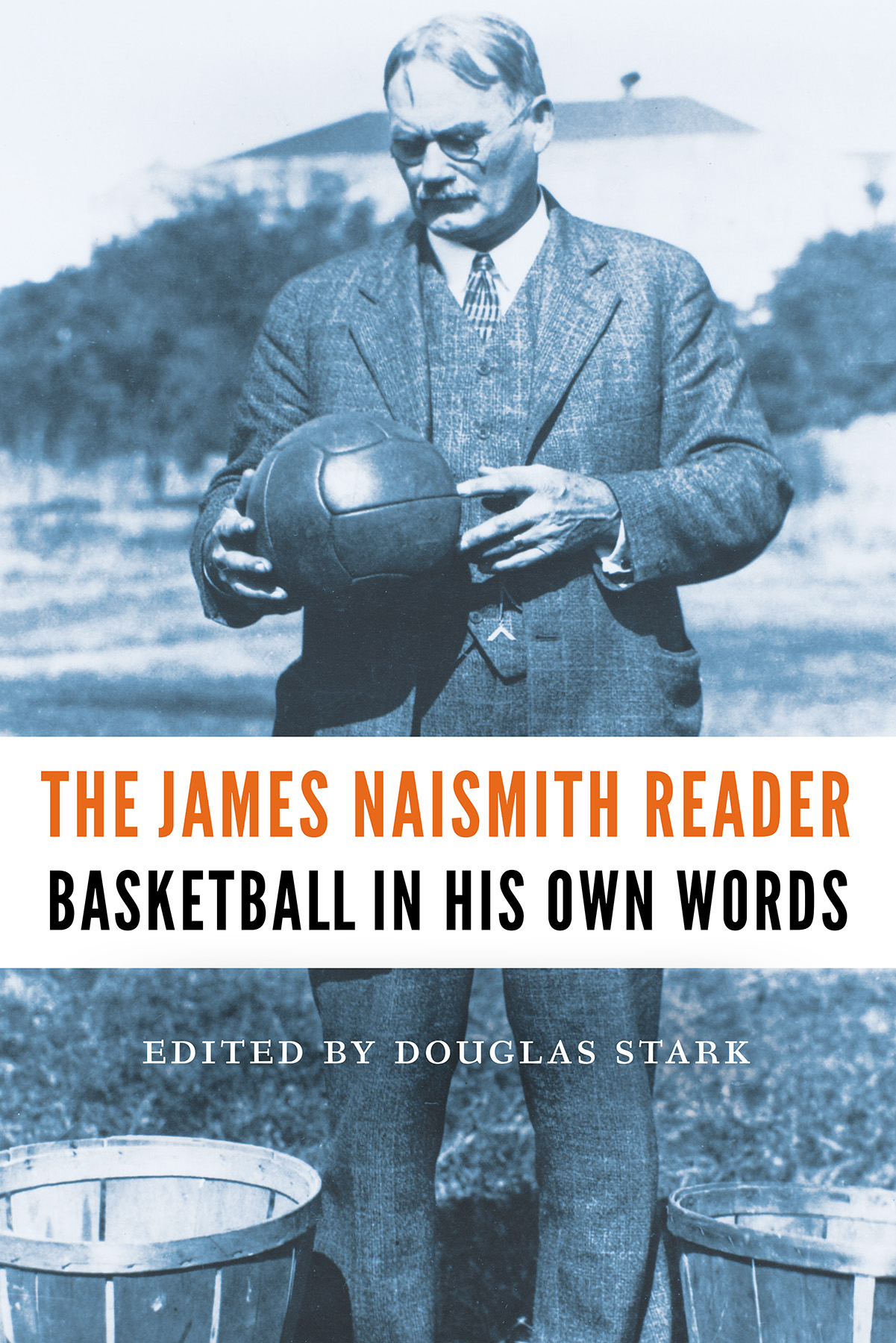
Douglas Stark has done basketball and those who follow it a great service by collecting the fascinating writings of a wholly original man. Readers will come away with a rich sense of James Naismith and the world that made him.
Alexander Wolff, author of Big Game, Small World: A Basketball Adventure
Douglas Stark has produced a valuable resource for anyone interested in the formation and development of the game.
Rob Rains, author of James Naismith: The Man Who Invented Basketball
Publication supported with a Swish Grant
Figure Foundation
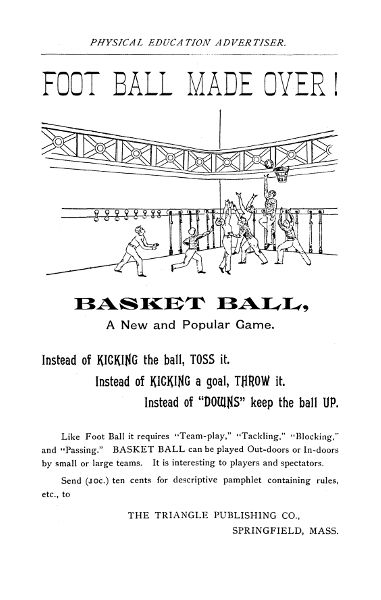
The James Naismith Reader
Basketball in His Own Words
Edited by Douglas Stark
University of Nebraska Press | Lincoln
2021 by the Board of Regents of the University of Nebraska
Cover designed by University of Nebraska Press; cover image courtesy of University Archives, Spencer Research Library, University of Kansas.
The introduction previously appeared in Wartime Basketball: The Emergence of a National Sport during World War II, by Douglas Stark (Nebraska, 2016).
Acknowledgments for the use of copyrighted material appear in , which constitutes an extension of the copyright page.
All rights reserved.
Library of Congress Cataloging-in-Publication Data
Names: Naismith, James, 18611939 author. | Stark, Douglas (Douglas Andrew), 1972 editor.
Title: The James Naismith reader: basketball in his own words / edited by Douglas Stark.
Description: Lincoln: University of Nebraska Press, 2021. | Includes bibliographical references.
Identifiers: LCCN 2020008278
ISBN 9781496219015 (paperback)
ISBN 9781496224538 (epub)
ISBN 9781496224545 (mobi)
ISBN 9781496224552 (pdf)
Subjects: LCSH : Basketball. | BasketballHistorySources.
Classification: LCC GV 885 . N 185 2021 | DDC 796.323dc23
LC record available at https://lccn.loc.gov/2020008278
Frontispiece: Advertisement for the game of basketball as it appeared in The Triangle, January 1892. This is believed to be the first advertisement for the game since its invention in December 1891. Springfield College Archives and Special Collections.
The publisher does not have any control over and does not assume any responsibility for author or third-party websites or their content.
For
Tessa Eden Stark
Contents
Minister. Inventor. Physical education instructor. Doctor.
Dr. James Naismith wore many hats during his lifetime, but the one in which he is most known for is the invention of basket ball (two words for the first few decades) in December 1891. Assigned to create an indoor game to occupy the class of incorrigibles during the long New England winters, Naismith harkened back to his youth in Canada to help solve this challenge that had perplexed some of his colleagues, two of whom had previously tried and failed with this particular class. In 1891 the International YMCA Training School in Springfield, Massachusetts, was a leader in teaching physical education instructors and preparing them to carry the tenets of Muscular Christianity with them as they traveled the world. Tasked by his professor Dr. Luther Gulick, Naismith created basketball, a game that has since become a global phenomenon.
Since its creation, a number of myths or misunderstandings have been perpetuated. First, James Naismith was not an American. He was a Canadian who invented the game while studying and teaching in the United States. Second, as basketball historian Chad Carlson writes, Dr. Naismith originally created the game to be part of a college physical education curriculum. From its birth, basketball was a college game created by a college instructor for college students to play. Third, basketball was created not with commercial interests in mind but as a form of recreation. It was designed as an activity that developed and supported good, clean living. For Naismith, this basic premise was far more important than the final score. For him, it was basketballs raison dtre.
One of the more interesting threads in the games early development was how quickly it spread. No other sport, before or since, has caught on so quickly. The first game of basketball was held on December 21, 1891, shortly before the end of exams and the start of the holiday season. The students left campus several days later and traveled home with this new game fresh in their minds. Within weeks, basketball was being played in YMCA s and churches across the nation. Articles started to appear in newspapers in early 1892 touting this new form of winter recreation. Easy to play, it only required a form of a basket and a ball. It was not expensive. It could be played with just one or many individuals. It combined physical education with strategy. It was the perfect game at the right time. Because of this, the game quickly became popular. As Carlson points out, Basketball also could be known as the game of missionaries. Naismiths creation traveled as far and as quickly as the YMCA students took it, catapulting from Springfield to YMCA s and colleges across the country and to Christian mission projects around the world. Its rapid spread is one of the more fascinating and least understood aspects of the games history.
Soon games were played. Leagues were formed. Players were payed. Tournaments were created. Championships contested. Rule books written and translated into multiple languages. Companies offered endorsements. The media covered the sport in print and on radio. By 1936 basketball was an Olympic sport. Not even in his wildest dreams could Naismith keep up with the games popularity, growth, and development. It far exceeded what even he thought this game could or would become as he sat in his office in December 1891 hoping that he could find a solution to the assignment Dr. Gulick gave him. He did not want to fail the assignment. Since its invention, it seemed everyone but Naismith profited from the game. He had one endorsement, which failed miserably. He did not patent the rules. Nor did he know where the original rules were for many years. As the first coach in the University of Kansass storied basketball history, he is the only one with a losing record. Money was raised so that he and his wife Maude could travel and witness the games introduction as an Olympic sport in 1936. Finally, he could see firsthand how popular his invention had become. Basketball continued to snowball and snowball and not even Naismith could keep up.
One aspect of the games creation and Naismiths role in it that has not been fully covered in the literature is what Naismith actually thought about the game. His book Basketball: Its Origin and Development was published 1941, two years after his death. What did Naismith think about the game? This question is one that I have thought about for many years. It led me to see what articles, speeches, letters, and correspondence I could assemble that would shed light on Naismiths views of the game. The sources compiled in this volume provide a different perspective on the game, one through the lens of Naismith. As a primary-source reader, the book is meant to promote Naismiths voice. This is an attempt to answer the questionWhat did Naismith think about the game?
These are his words.
Working on each book project presents its own unique challenges regarding researching and writing. Discovering what material Naismith authored about the game of basketball became a detective-type project as I tracked down material online, in repositories, and through individuals scattered in the United States and Canada. Throughout, I was able to compile a solid source of information that sheds light on how Naismith thought about the game of basketball. It is by no means complete and exhaustive, but the body of work herein is a valuable lens in understanding Naismith thoughts on the game and how it evolved during his lifetime. The journey was enjoyable and rewarding but one that required the assistance of many individuals.
Next page
